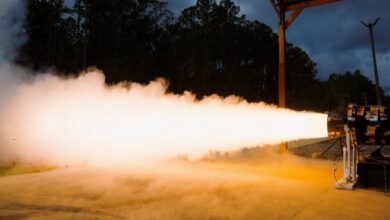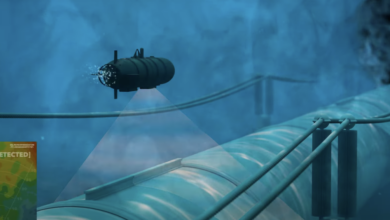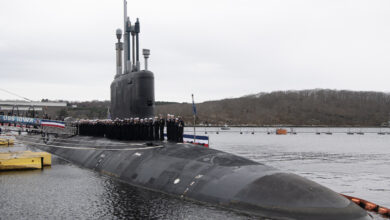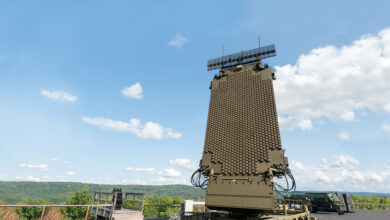Lockheed Martin and the F-35 Pax River Integrated Test Force have completed an initial flight test to integrate the AGM-158C Long Range Anti-Ship Missile (LRASM) onto the F-35B Lightning II stealth fighter jet.
Both the AGM-158 weapon systems — LRASM and the Joint Air-to-Surface Standoff Missile — are being integrated into the F-35’s external carriage as part of the F-35 Block 4 upgrades.
This follows a flight test with LRASM on the F-35C in September 2024.
The short take-off/vertical landing F-35B is operational with the US Marine Corps, and the carrier-based F-35C with the US Navy.
“Integration of the AGM-158 strike systems family delivers increased reach and lethality against heavily protected, strategic targets,” VP of Air Dominance and Strike Weapons at Lockheed Martin Missiles and Fire Control Jon Hill said.
VP of the F-35 program at Lockheed Martin Aeronautics Chauncey McIntosh added, “The integration of these systems further demonstrates how we continue to add the most advanced capabilities to the F-35 to ensure it will remain a dominant force, owning the skies for decades to come.”
Flight Tests
During the flight test, the missile was seen outfitted externally on the aircraft’s innermost hard points, in addition to a pair of inert AIM-9Xs on the wingtips.
The 14-foot (4.3-meter), 2,760-pound (1,250-kilogram) missile is difficult to fit inside the aircraft’s internal weapons bay.
The trials are meant to check the weapon’s impact on the aircraft’s airframe in a range of flight envelopes.
It will be followed by in-flight drop testing and full weapon testing.
Long Range Anti-Ship Missile
The Defense Advanced Research Projects Agency developed the low-observable missile for both the US Air Force and US Navy.
It is currently cleared for use with the Navy F/A-18E/F Super Hornets and Air Force B-1 bombers.
In addition to the F-35, the weapon is being considered for integration with the Navy’s P-8 Poseidon maritime patrol plane and the Air Force’s F-15E Strike Eagle and F-15EX Eagle II jets.
LRASM Features
Thanks to its onboard targeting system, the missile’s reliance on intelligence, surveillance and reconnaissance platforms, network links, and GPS navigation is reduced.
In contested environments, it employs less-precise target cueing data to find and destroy predefined targets.
Three LRASM variants are part of the Offensive Anti-Surface Warfare program: LRASM 1.0, LRASM 1.1, and LRASM C-3.
The LRASM 1.0 has been operational since 2019, while the 1.1 has been undergoing initial operational test & evaluation since being fielded in 2023.
The first two variants are capable of anti-surface warfare, while an additional land attack capability is being planned for the future C-3 variant, with scheduled early operational capability for the fourth quarter of fiscal 2026.
The C-3’s operational range is also likely to be twice the previous versions (around 600 miles/966 kilometers versus 200-300 miles/322-483 kilometers).












